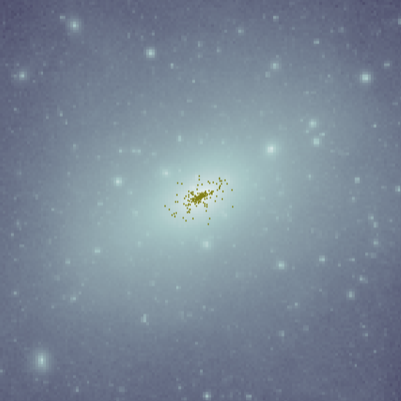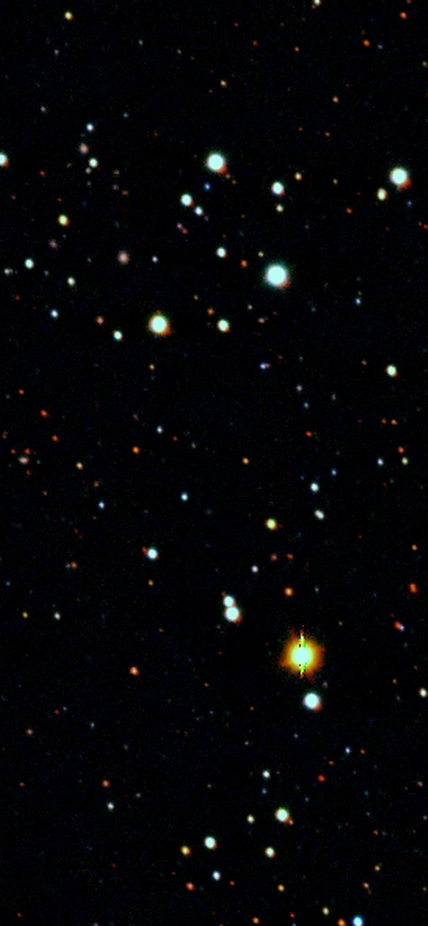Pasadena, CA—An MIT-led team of astronomers that includes Carnegie’s Joshua Simon, Lina Necib, and Alexander Ji has discovered an unexpected outer suburb of stars on the distant fringes of the dwarf galaxy Tucana II. Their detection, published by Nature Astronomy, confirms that the cosmos’ oldest galaxies formed inside massive clumps of dark matter—what astronomers refer to as a “dark matter halo."
Our own Milky Way is surrounded by a cadre of orbiting dwarf galaxies—relics of the ancient universe. A new technique developed by lead author Anirudh Chiti of MIT extended the astronomers’ reach and revealed never-before-seen stars on the outskirts of Tucana II. Their discovery opens up new questions about the origin of these galactic outskirts.
The stars of Tucana II were already among the most primitive known.
“Stars manufacture elements throughout their lifetimes, which they spread into the surrounding gas when they explode as powerful supernovae,” explained Simon. “These raw materials are then incorporated into new stars, making each successive stellar generation more chemically complex than its predecessors. As a result, we know that stars containing very small amounts of most elements are incredibly old.”
The newly discovered stars on Tucana II’s fringes are even more ancient than the ones close to its center—a phenomenon never previously observed in such a small dwarf galaxy. In larger galaxies, this type of distribution can be the remnant of a collision between two galaxies made up of stars of different ages. If a galactic merger is the source of this arrangement, these would be the smallest galaxies yet known to merge.
“We may be seeing the first signature of galactic cannibalism,” said MIT’s Anna Frebel in a statement. “One galaxy may have eaten one of its slightly smaller, more primitive neighbors, that then spilled all its stars into the outskirts.”
 The spatial distribution of Tucana II’s stars is highly unusual for a dwarf galaxy, which are usually denser. The motions of the fringe stars show that all of them are gravitationally bound to the galaxy’s center, allowing researchers to make a much better estimate of the galaxy’s total mass than would usually be possible.
The spatial distribution of Tucana II’s stars is highly unusual for a dwarf galaxy, which are usually denser. The motions of the fringe stars show that all of them are gravitationally bound to the galaxy’s center, allowing researchers to make a much better estimate of the galaxy’s total mass than would usually be possible.
“The mass of all the stars in Tucana II is considerably less than the total mass of the galaxy, which is predominantly supplied by dark matter,” Ji explained. “Dark matter comprises about a quarter of the universe’s mass and its gravity holds galaxies together.”
A galaxy’s dark matter extends far beyond its center, where most of its stars are located. This means that ordinarily, astronomers measure the mass of a galaxy’s center and extrapolate to estimate its total mass. Discovering these stars on the outer edges of Tucana II meant that less extrapolation was necessary.
The technique Chiti developed will hopefully be able to identify other dwarf galaxies with sprawling suburbs of stars on their fringes.
“This means that other relic first galaxies probably have these kinds of extended halos too,” he concluded in the MIT statement.
Quotations from Chiti and Frebel were sourced from the MIT News article “Astronomers detect extended dark matter halo around ancient dwarf galaxy” written by Jennifer Chu.
__________________
This work was supported in part by the U.S. National Science Foundation and a NASA Hubble Fellowship.
